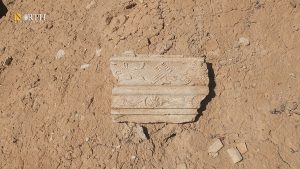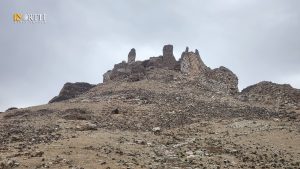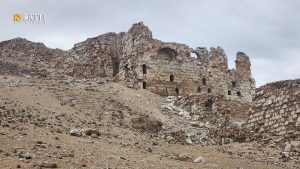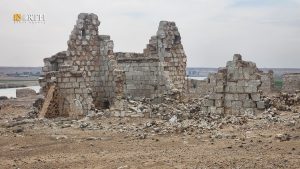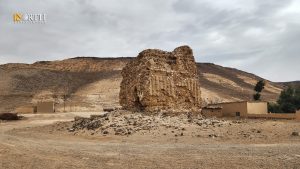By Hussam Shahin
DEIR EZ-ZOR, Syria (North Press) – In Syria’s eastern Deir ez-Zor countryside, economic desperation and government neglect have fueled a surge in illegal archaeological excavations.
Armed with sophisticated equipment and backed by transnational smuggling networks, residents are looting centuries-old heritage sites in search of buried treasures—while officials warn of irreversible cultural loss.
Muhammad al-Ali, 40, a resident of Deir ez-Zor countryside, recently rented an electronic metal detector after hearing from a friend about possible signs of an archaeological tomb located about 13 kilometers west of Abu Kamal.
Organized networks
Speaking to North Press, al-Ali said he paid approximately $1,000 to rent the device for just three days, as he could not afford the full purchase price.
“Spending $1,000 to rent the device for three days is better than paying $10,000 outright. Once I find and sell something valuable, I can afford to buy one,” he said.
To him, the act is neither immoral nor illegal—rather, he considers it a “legitimate right,” urging others to follow suit, especially amid the ongoing economic crisis that has devastated Syrian livelihoods.
Unregulated excavations using advanced imported equipment are spreading across Deir ez-Zor. Antiquities dealers have reportedly brought in sophisticated electronic devices from abroad, enabling the looting of historical sites both inside and around the city. Affected locations include al-Tarif, al-Musareb, Ayyash, al-Kharita, and Tel Tabus in al-Shumaytiyah, extending even into the Nazira site in the Bishri Mountains desert.
Abdul-Jabbar al-Khader, a local antiquities excavator, told North Press that Jewish cemeteries are among the most sought-after targets, as they are often believed to contain buried valuables such as gold, statues, coins, and other artifacts.
He added that many excavators work in organized groups—some focusing on the digging, while others, often based abroad in Lebanon and Turkey, specialize in marketing the finds.
Excavated artifacts are typically promoted via social media platforms such as Facebook, Telegram, and WhatsApp, and then smuggled out of Syria through illicit routes, primarily into Lebanon and Turkey, according to North Press sources.
Government inaction
The rise in antiquities looting comes amid a near-total absence of government intervention. Ruslan al-Ghazi, an official in the Directorate of Culture in Deir ez-Zor, attributes this to the transitional government prioritizing urgent security issues over cultural heritage protection.
Since the fall of the previous regime in December, various regions—including Deir ez-Zor, Daraa, Rural Damascus, and Homs—have witnessed a surge in unregulated archaeological excavations.
Al-Ghazi said that his directorate has formally requested government action to protect archaeological sites in Deir ez-Zor and elsewhere. The requests call for comprehensive protection measures to prevent looting and vandalism.
He emphasized the importance of creating a national database to document archaeological sites and assess damage through aerial photography and technical tools. He also urged stricter legal penalties for illegal excavators and collaboration with international bodies such as UNESCO and Interpol to recover looted artifacts.
Deir ez-Zor is home to numerous historically significant sites, including the ancient Kingdom of Mari near Abu Kamal, the early Christian site of Dura-Europos, the ancient Halabiya and Zalabiya fortresses (dating back to the 9th millennium BCE), and the al-Rahba fortress near al-Mayadin on the Euphrates River.
While looting has spiked since the regime’s collapse, al-Ghazi noted the problem is not new. In recent years, both the Islamic State (ISIS) and Iranian-backed militias were actively involved in plundering Syria’s cultural heritage, with devastating long-term consequences.



